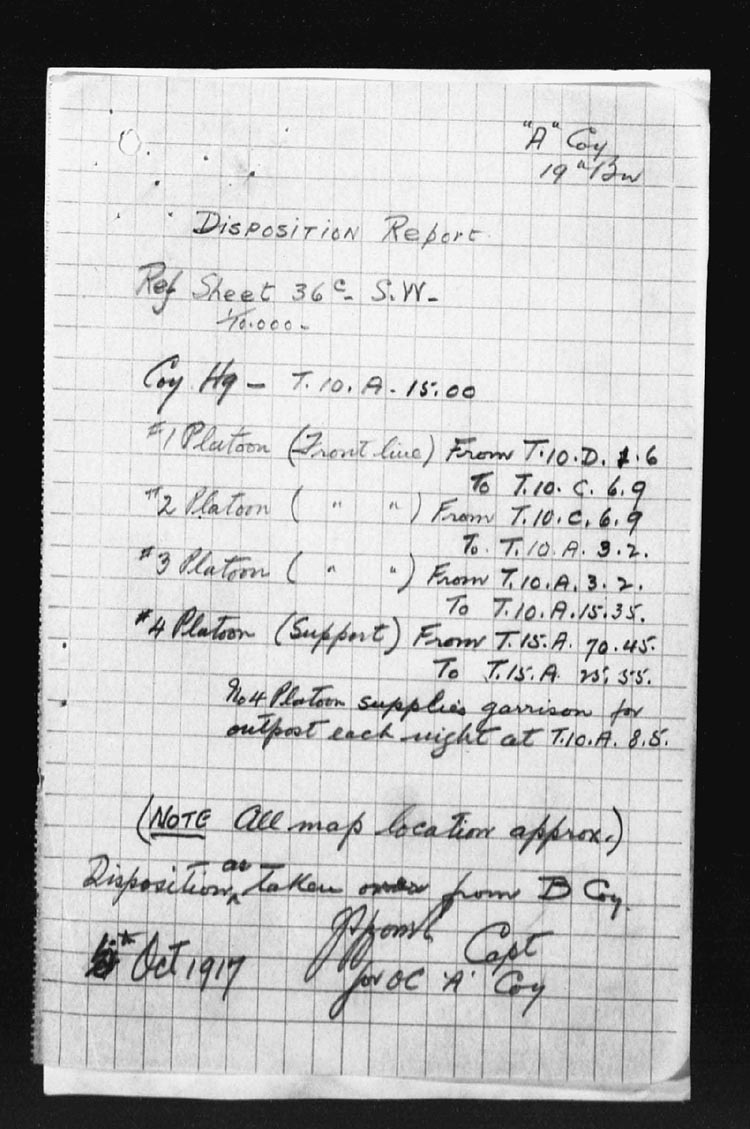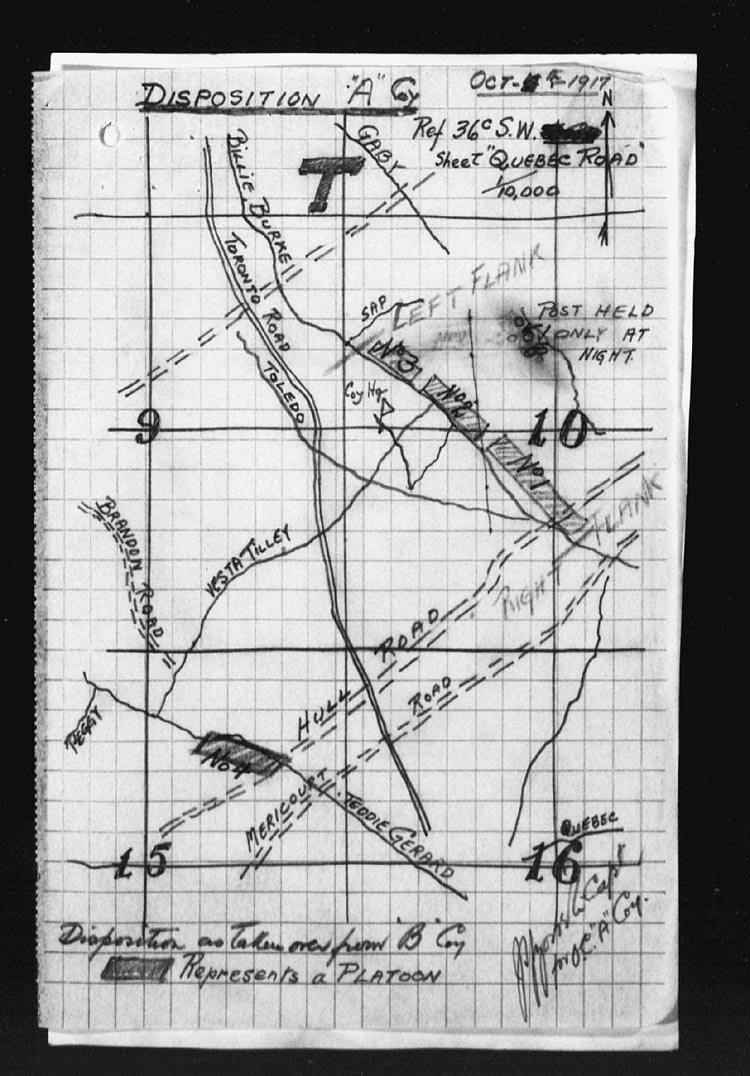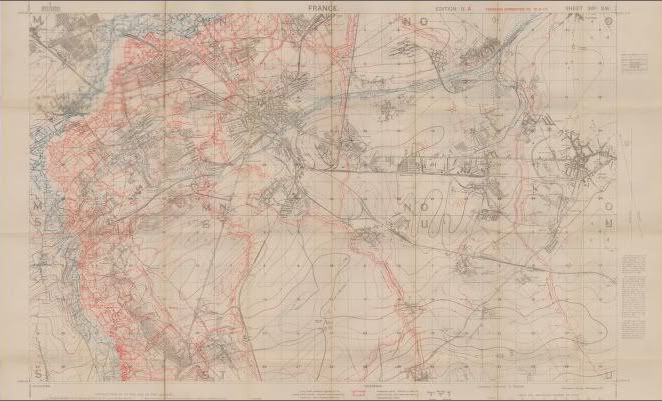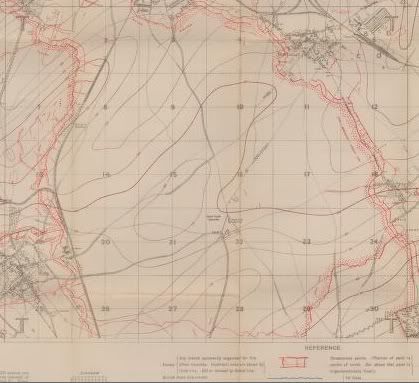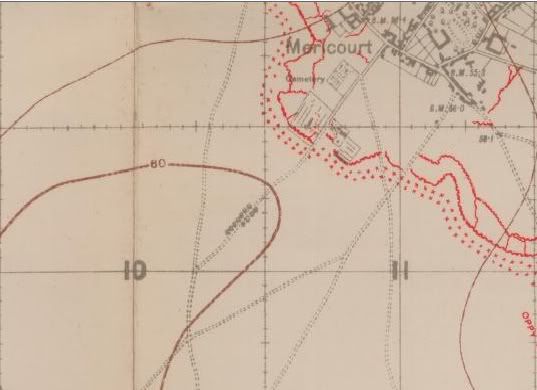Private Alfred Jackson attested to the CEF on March 14, 1916 in Parry Sound, Ontario. He attested to the 162nd Overseas Battalion, which we know was subsequently absorbed by the 4th and 34th Battalions to provide reinforcements to the Canadian Corps in the field. Although many young men joined local battalions so that they could "serve together", the high attrition rate on the front lines meant that many of the battalion had to be "broken up" for reinforcements.
At the time Alfred Jackson signed up with the CEF he indicated that he was a "Merchant" but that he was not married. Apparently he had no previous military experience. As a new recruit he was a "senior" as he was 26 years old (March 26, 1891) at the time of his attestation. Other records show his birth date as March 21, 1891.
The 1911 Census of Canada lists Alfred Jackson Jr. as the son of Alfred and Ephemia Jackson who had six (6) sons (Gordon 1881, Alfred 1891, Lorne 1893, Stewart 1894, Wilfred 1897, and Thomas 1902. There are no daughters reported in the census documents.
Attestation Papers of Alfred Jackson #657658
Please note that where there is an image in this file and you are viewing the on-line version, you can "click" on that image to see a larger scale image, or the original document. If text is underlined and coloured, that means it is a hyperlink to an exterior document on the Internet. If you "click" that link you will be taken to that document. The document might be a archived file, a map image, war diary records or another reference text. We encourage you to use the on-line version of this document for best results.
For the on-line version, enter this address into your computer:
http://cefww1soldierajackson.blogspot.com/
Service Record of Alfred Jackson
We have retrieved the service records of Alfred Jackson from Library and Archives Canada, to prepare this report for our Sister Branch of the Royal Canadian Legion in Bala, Ontario. We do not know the family of Alfred Jackson, only that he was the only WWI Soldier listed on the Bala Cenotaph during our visit of July 2010. As such, we undertook to order his service record to prepare this report for our Bala Comrades.
A complete copy of Private Jackson's service record is now available at this web link, the details of which provided the information necessary to prepare this summary report:
Service Record of Private Alfred Jackson, #657658
The "Medical History Sheet" of Private Jackson indicates that although he joined the 162nd Battalion, he was transferred to the 35th Battalion and then to the 19th Battalion. The 35th Battalion, to which he was first transferred from the 162nd was broken up and absorbed by the 4th Reserve Battalion. From there he went to the 19th Battalion. He assigned his estate to his older brother, Gordon Burgess Jackson. Gordon was apparently a Solicitor in Parry Sound (Gordon Burges Jackson, B.A., L.L.B.).
Private Jackson arrived in England with the 162nd Battalion on November 11, 1916 on the S. S. Caronia, which reportedly left Halifax on November 1, 1916 (see Matrix Troopships Utility). On December 5, 1917 he was transferred to the 35th Reserve Battalion at Shorncliffe. While with the 35th Reserve Battalion, Alfred accepted the position as the CQMS (Company Quarter Master Sergeant), with pay. On January 4, 1917 he was Struck-Off-Strength (SOS) from the 35th and Taken-On-Strength (TOS) to the 4th Reserve Battalion at West Sandling.
Alfred Jackson was soon to see the real action in France, for on January 12, 1917 he was TOS to the 19th Overseas Battalion, of the 4th Infantry Brigade, 2nd Canadian Division. He was in France by February 12, 1917 and had reverted to his previous grade as an Infantry Private. The next report on that file is that he was KIA (Killed in Action) on October 5, 1917 (reported on October 11, 1917). Private Jackson's "CASUALTY FORM - ACTIVE SERVICE" states that he was killed in action in the Front Line Trenches. At that time he was in "A" Company of the 19th Battalion, with some indication he was in the 1st Platoon. That is important to this review as there are maps showing where each unit was located during the first week of October 1917.
The War Diary Records
The war diary of the 19th Canadian Infantry Battalion does not list any casualties for October 5, 1917, However the record does show one (1) casualty on October 4, 1917, so we presume that was Private Alfred Jackson. He was most likely injured (or killed) on the front lines on the 4th and was not classified as KIA until October 5th. The war diary of that date states the following:
"Disposition unchanged. There was intermittent shelling during the day. Heavy shelling commenced on both flanks about 7 p.m. and continued until 10 p.m. The shelling spread to our front at 9 p.m. causing one casualty. Working parties of a total of 5 Officers and 250 Other Ranks were engaged during the night in carrying, improving trenches and wiring. Our usual patrols covered the glacis, but none of the enemy were encountered."Although the CEF was to move to the north the initiate the "3rd Battle of Ypres" (Passchendale) in early October 1917, the units had not moved at the time of the death of Private Jackson. The War Diary material shows that the 19th Battalion was still in the vicinity of Roclincourt (near the action for Vimy Ridge) in early October 1917, specifically at Neuville St. Vaast (Map 36C SW). The action directed at that time is described in APPENDIX 1 of the October 1917 war diary. A specific map of the location of the 19th Battalion in the 1st week of October places them slightly north-west of the Town of Vimy, with "A" Company on the south-west flank:
The daily war diary for October 1917 reports that the 4th Canadian Infantry Brigade had received orders to replace the 6th Canadian Infantry Brigade in the forward areas. Specifically, the 19th Battalion replaced the 27th Battalion in the front line right sector. The 19th Battalion left Neuville St. Vaast starting at 6:45 pm on October 2, 1917 and were in place by 11:00 pm. It is reported in the war diary that "A" Company was in Battalion Support in CANADA and KURTON trenches to the right of PEGGIE Communication Trench. There were 29 Officers and 29 Other Ranks in the 19th Battalion at this time. There was limited shelling of the trenches of October 3rd, resulting in 2 casualties and heavier shelling on October 4th resulting in 1 casualty (presumably Private Jackson, as there were no casualties on October 5th). This event occurred at approximately 9 pm when the shelling spread to the front lines of the 19th Battalion.
Comparing the above War Diary Map to MAP 7 of the Nicholson Text (see the Matrix Nicholson Utility) provides a clear indication as to their location relative to the action in April 1917 at Vimy Ridge. For reference, note that Petit Vimy and Vimy are noted on the map, just east of the "Bois de la Folie". Neuville St. Vaast is the the SE of Vimy and the reference town of Mericourt is to the NW of Vimy.
Comparing the above War Diary Map to MAP 7 of the Nicholson Text (see the Matrix Nicholson Utility) provides a clear indication as to their location relative to the action in April 1917 at Vimy Ridge. For reference, note that Petit Vimy and Vimy are noted on the map, just east of the "Bois de la Folie". Neuville St. Vaast is the the SE of Vimy and the reference town of Mericourt is to the NW of Vimy.
The records suggest that Private Jackson was with the 1st Platoon of "A" Company so we can place him near his actual location from this posting on the war diary:
Details of "A" Coy, incredibly at the "Platoon Level" are further shown in detail in the war diary appendix map as follows:
The main reference for all of the Trench Maps has recently been published on-line through the McMaster University (Hamilton, Ontario CANADA) Lloyd Reeds Map Collection. The overall view of Map 36cSW (Roclincourt Sheet) is depicted as follows:
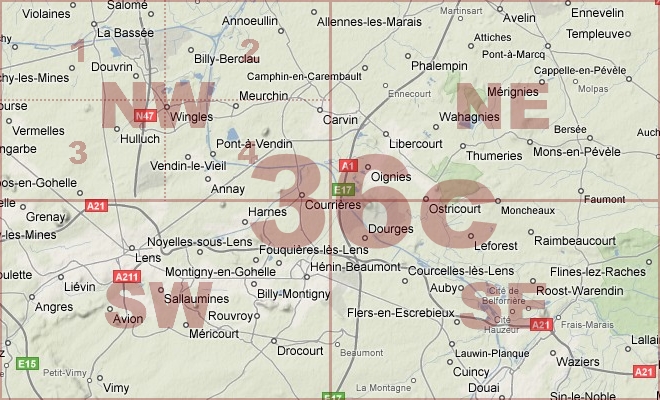
From this we can go to the specific trench map, very similar to (if not the exact same map) that was in use at that time and is referenced in the War Diary:
We can zoom in on that map of 36cSW to specifically see where Area "T" was located, as shown here:
And zooming further you can see where Sector 10 was located in Area T (each alphabetic Area as 36 Sectors 6x6) just SE of Mericourt:
Sector T is then broken up into 4 smaller squares (a,b,c,d,) which relate to (NW, NE, SW, SE) in the main square. Private Jackson was in T.10.d.6 to T.10.c.9 so we know he was in the area shown in the two bottom squares. Unfortunately on this 1/20,000 map there are no trench details and the 1/10,000 is not available on this McMaster site. However, those details are shown in the sketches shown above from the War Diary. With this information, you could go directly to that location.
The trench map information was used to prepare an overlay of the area in modern day GOOGLE EARTH, the results of which are shown below. You can see the reference points of Vimy and Mericourt, as well as the matching railroad and highway lines (even if they are no longer present they border the areas). Area T10d is where Private Jackson was when he was killed in action.
 |
| Google Earth Overlay of Front Line Area, October 1917 |
Google Earth Overlay of Private Alfred Jackson's Final Day on October 4, 1917
Private Jackson spent his last day in this Sector on October 4, 1917 and was reported KIA on October 5, 1917. The war diary suggests he was probably mortally wounded if not killed in action on October 4th but this was not reported until October 5th. He is buried in the Ecoivres Military Cemetery near Mont-St.Eloi (in Pas-de-Calais, France). His grave memorial location is VI.K.18, just to the North West of the Great Cross:
From the Commonwealth War Graves Commission:
Mont-St. Eloi is a village in the Department of the Pas-de-Calais, 8 kilometres north-west of Arras. Ecoivres is a hamlet lying at the foot of the hill, to the south-west and about 1.5 kilometres from Mont-St. Eloi. The cemetery is on the D49 road.
Please note that this diagram has NORTH to the bottom of the image and thus we have shown the Google Earth photograph in the same format.



